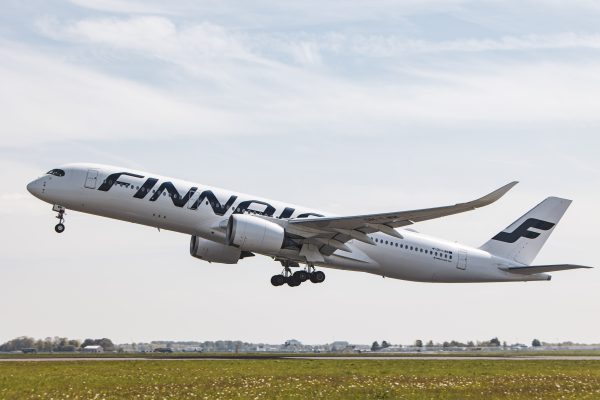Ukraine faces tough choices about how to rebuild and upgrade its war-destroyed telecommunication network, which Russia deliberately targets. The country’s dire financial situation makes it difficult to exclude inexpensive Chinese telecom equipment. But the desire to join NATO and the European Union means it must buy elsewhere. It should consider a new non-Chinese technology called Open Radio Access Network (Open RAN).
The war with Russia has costed Ukrainian telecom operators 4,000 mobile base stations and destroyed more than 60,000 kilometers of fiber-optic cable. By February 2023, one year after the war had begun, the World Bank estimated that Ukraine needed around $3.1 billion for short-term telecom reconstruction in Kyiv and border regions.
Western donors stand ready to assist. At the recent Ukraine Recovery Conference in London this year, the Dutch telecom company Veon pledged a $600 million investment in its Ukrainian subsidiary Kyivstar. Kyivstar plans to cover 98% of Ukraine’s population with 4G mobile within three years.
The problem is that Kyivstar relies on Chinese vendors Huawei and ZTE. If Ukraine instead turns to trusted, but more expensive, vendors such as Sweden’s Ericsson and Finland’s Nokia, it could slow the rollout of its telecommunication network given its limited resources.
A temptation to opt for cheap Chinese telecom vendors collides with Ukraine’s EU and NATO ambitions. Under the EU’s risk-mitigating 5G toolbox, member states must restrict Chinese vendors. The United States and the United Kingdom are even more insisting on trusted telecommunications.
Ukraine has its own reasons for insisting on tech independence. China partners with Russia and supports Russia’s war effort. It needs to remember that Chinese vendors are cheaper in part because Beijing subsidizes them in an attempt to create dependency on its high-tech.
Ukraine’s National Security and Defence Council is tasked with weighing the options. It would cost more than $1 billion to rip out and replace the Chinese kits, according to Ukraine’s Ministry of Digital Transformation. Ukrainian operators rely on Chinese suppliers for up to 70% of their equipment, and replacing existing kits may be impossible given the country’s strained finances.
Open RAN offers a way forward. While traditionally one vendor builds a closed network from top to bottom, Open RAN divides the network into several bricks connected by open interfaces. Telecom operators could buy RAN bricks from various suppliers, significantly reducing the risk — and cost — of relying on a single supplier. Japan’s Rakuten has rolled out the world’s first Open RAN country-wide network without Chinese components. Rakuten has signed a partnership with Veon to work on Open RAN for Ukraine.
But Open RAN presents political and technical risks, requiring Ukraine to walk a fine line between American and European interests. Washington embraces Open RAN to marginalize Chinese providers. Conveniently, US companies dominate Open RAN software, chips, and cloud storage.
The European Commission is lukewarm. It fears that the new technology has security holes, consumes too much energy, and will hurt European champions Nokia and Ericsson. Ukraine could navigate these concerns by adding trusted European vendors to its core telecom network and by ensuring that its Open RAN solutions include European suppliers.
Fair competition in the reconstruction and upgrading of Ukrainian telecom is critical for Ukraine’s own economic future and growth. The country’s richest oligarch, Rinat Akhmetov, recently purchased the majority stake in Ukrtelecom, which has a monopoly on fixed-line telecom. It’s crucial that a powerful single individual does not control Ukraine’s critical infrastructure.
This danger is not just homegrown. US billionaire Elon Musk’s Starlink satellites are central to Ukraine’s war effort. Musk’s threats to cut off or limit service represent a grave threat to the country’s defense.
Ukraine recently nationalized the assets of Russian oligarchs Mikhail Fridman and Petr Aven in Veon/KyivStar. That’s a good start. For both its NATO and EU membership aspirations, Ukraine’s telecom sector represents a critical test. Ukraine should shun China and embrace diverse Western suppliers.
Henrik Larsen is a Non-resident Fellow with the Digital Innovation Initiative at the Center for European Policy Analysis. He previously served as a Political Adviser with the EU Delegation to Ukraine and with the EU Advisory Mission to Ukraine. He was a Research Fellow at the Harvard Kennedy School, a Fellow with the Carnegie Endowment for International Peace, and a Visiting Researcher at Stanford University.
Bandwidth is CEPA’s online journal dedicated to advancing transatlantic cooperation on tech policy. All opinions are those of the author and do not necessarily represent the position or views of the institutions they represent or the Center for European Policy Analysis.





